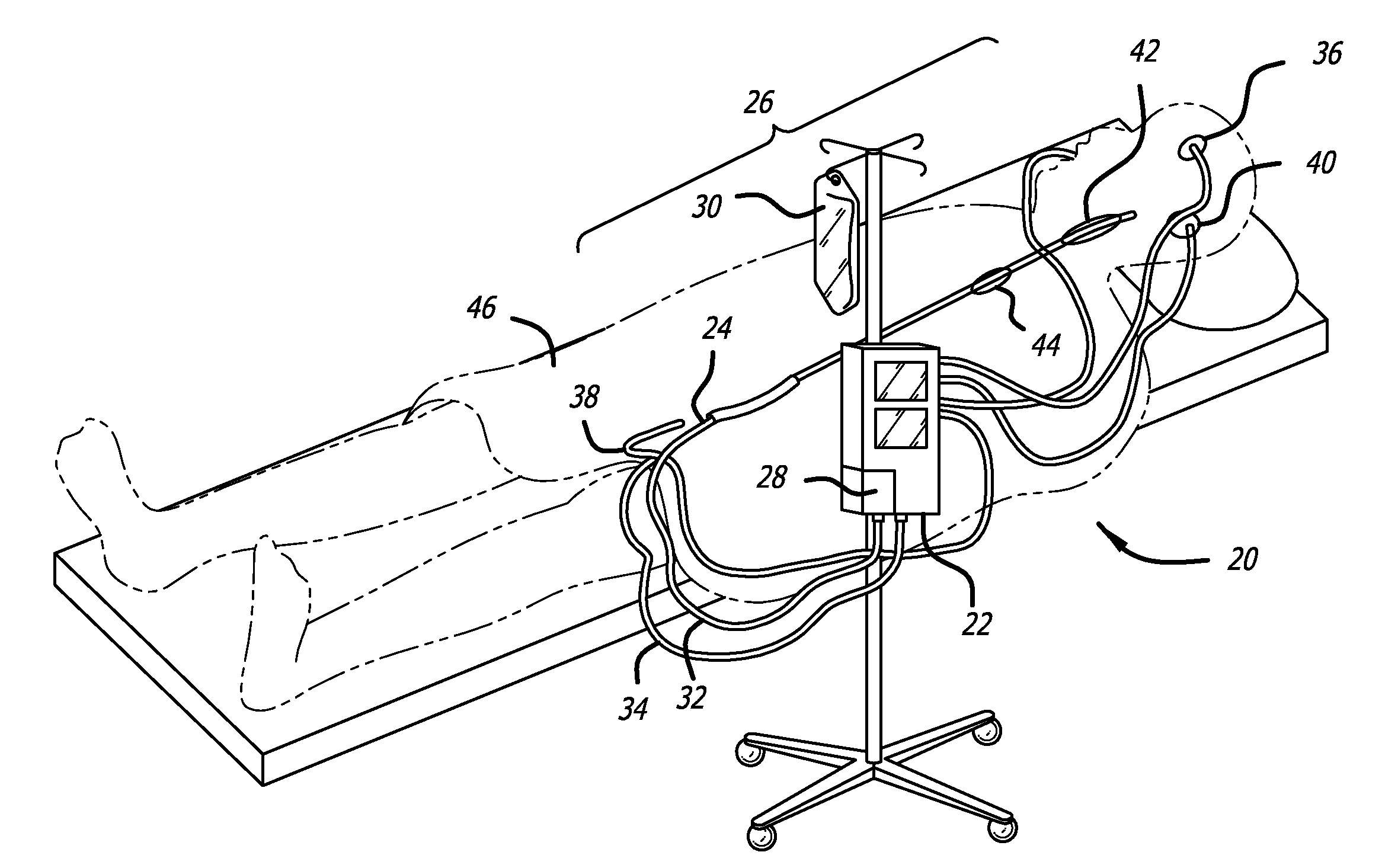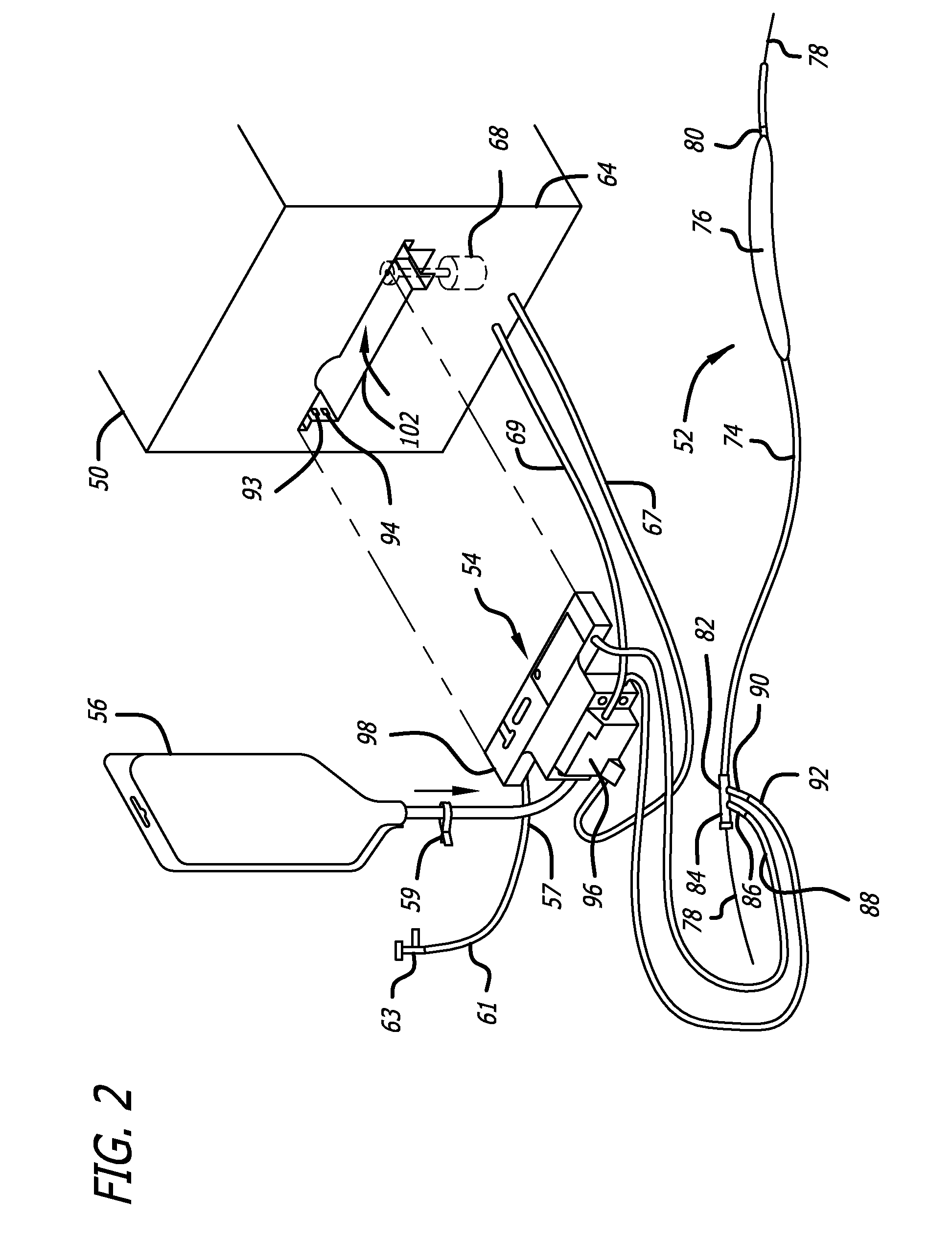Apparatus and method for providing enhanced heat transfer from a body
a technology of enhanced heat transfer and apparatus, applied in the field of medical devices and methods, can solve the problems of life-threatening, accidental hypothermia, and serious consequences of hypothermia
- Summary
- Abstract
- Description
- Claims
- Application Information
AI Technical Summary
Benefits of technology
Problems solved by technology
Method used
Image
Examples
Embodiment Construction
[0068]The present invention is primarily intended to include a catheter placed in the bloodstream of a patient for regulating the patient's body temperature, although those of skill in the art will understand that various other applications for the system of the present invention are possible. Indeed, the present invention may have applications beyond controlling the temperature of an internal body fluid, and the claims should not be so limited. In a preferred application, one or more of the heat exchange catheters of the present invention are positioned within a patient's vasculature to exchange heat with the blood in order to regulate the overall body temperature, or to regulate the temperature of a localized region of the patient's body. Heat exchange fluid is then circulated through the catheter to exchange heat between the blood and the heat exchange fluid, and a controller manages the functioning of the system. The catheters may be, for example, suitable for exchanging heat wi...
PUM
 Login to View More
Login to View More Abstract
Description
Claims
Application Information
 Login to View More
Login to View More - R&D
- Intellectual Property
- Life Sciences
- Materials
- Tech Scout
- Unparalleled Data Quality
- Higher Quality Content
- 60% Fewer Hallucinations
Browse by: Latest US Patents, China's latest patents, Technical Efficacy Thesaurus, Application Domain, Technology Topic, Popular Technical Reports.
© 2025 PatSnap. All rights reserved.Legal|Privacy policy|Modern Slavery Act Transparency Statement|Sitemap|About US| Contact US: help@patsnap.com



